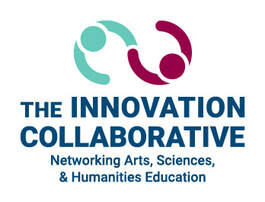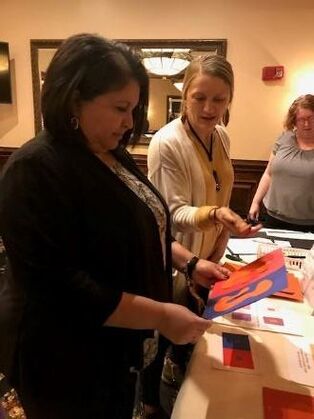100% of Teachers in Collaborative Professional Development Report Improvement in Their Practice2/25/2022
Building on two previous NEA grants, the project included teachers and administrators from the arts, sciences, math, English Language Arts, gifted education, technology, and social studies in grades K-12. To support the initiative, the project convened its Innovation Fellows, top teachers identified in the Collaborative’s first round of research, and selected administrators in Houston, Texas, to develop the PD. The Collaborative’s Fellows and selected teacher and administrator participants from the first cohort then became project leaders, mentoring the next two cohorts’ participants and helping guide their growth throughout the PD.
Online course components included readings and activities with related discussion posts, mentoring webinars with facilitators, and creation and implementation of STEAM lessons and experiences, using the Collaborative’s STEAM rubrics. An important component of the PD was the integration of Responsive Teaching, a methodology developed in collaboration with Collaborative partners at Texas Southern University to address the needs of underserved students, including those in rural and high poverty communities and historically marginalized or learning challenged students. The Responsive Teaching strategies used align perfectly with STEAM and contributed to the project’s success. One administrator participant pointed out that the link between STEAM and Responsive Teaching made all the difference in identifying opportunities for this type of teaching throughout her school district. Another administrator in secondary science said she had originally thought that, in STEAM, art was the icing on the cake. Through the PD project she came to realize that art was the primary ingredient that makes the cake and that, without it, there would be no cake. She also said that art can help STEM students understand the STEM content better. Another aspect of the course identified by participants as highly important was the use of the Collaborative’s creative and innovative thinking skills and its STEAM continuum from multi to transdisciplinary learning. An administrator highlighted what others thought in saying that the continuum and thinking skills “made everything gel”. Both an elementary science teacher and an elementary music teacher said they considered the thinking skills so important that going forward they will have the thinking skills as posters to use in their lesson planning. Using the Collaborative’s rubrics also made a difference, teachers and administrators reported. One STEAM coordinator said, “I will be using them (the rubrics) in my planning. They provide me a consistent tool…aligned for both teacher and student.” It was noted that the teachers’ and administrators’ students also benefitted as they learned to think across disciplines for greater creativity and also content understanding. In spite of COVID, participating teachers were highly enthusiastic about the course. A teacher said the training had “real stuff you can take…and use right away”. Another teacher said, “This is probably one of the best (and most useful) professional development opportunities I have taken part in for quite some time.” Encapsulating what many teachers felt, an administrator said, “This work has been absolutely game-changing for me”. The Collaborative is now making this teacher and administrator professional development model available to other teachers, schools, and districts.
1 Comment
2/28/2022 02:32:42 pm
How can we learn more about accessing the Collaborative's STEAM PD training?
Reply
Your comment will be posted after it is approved.
Leave a Reply. |

